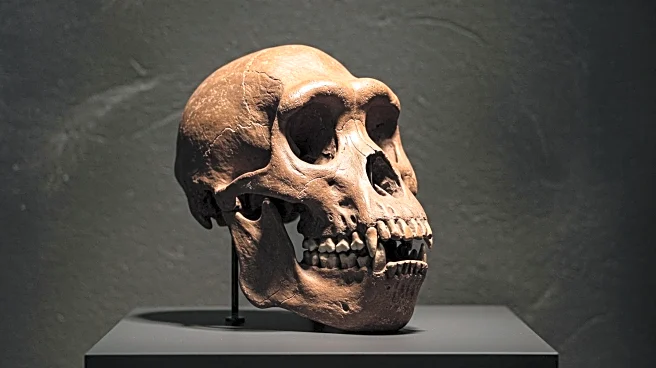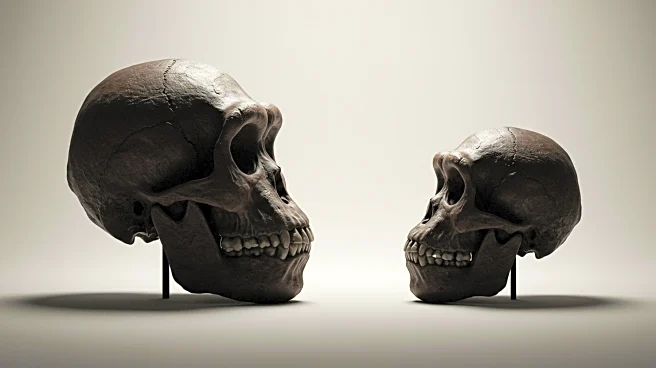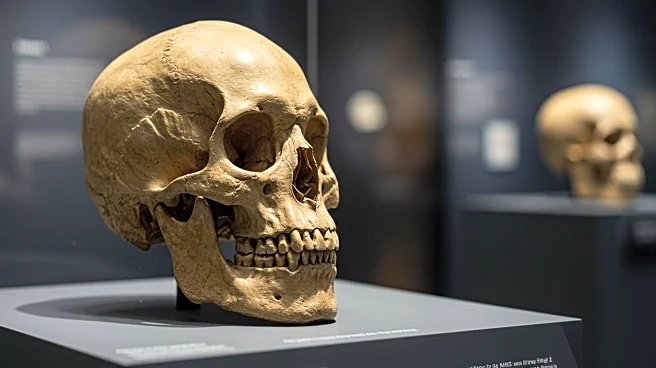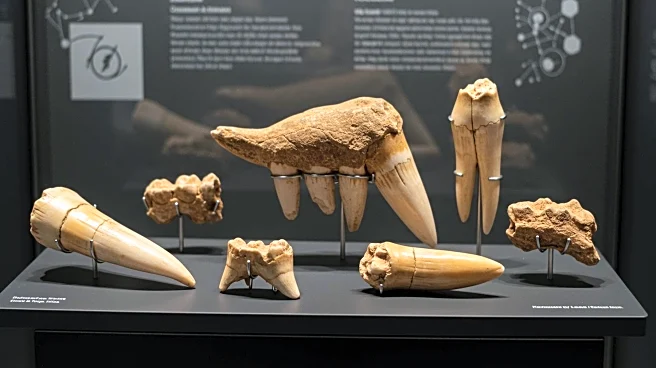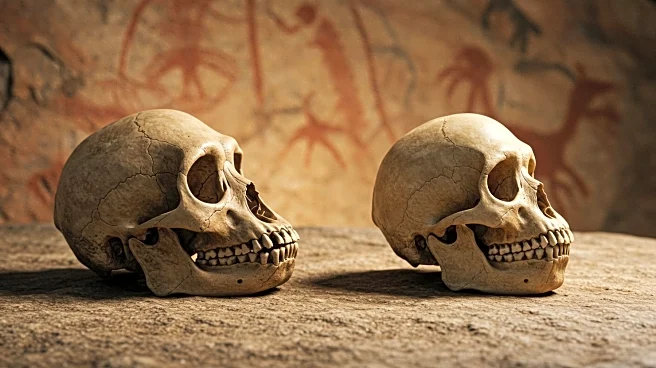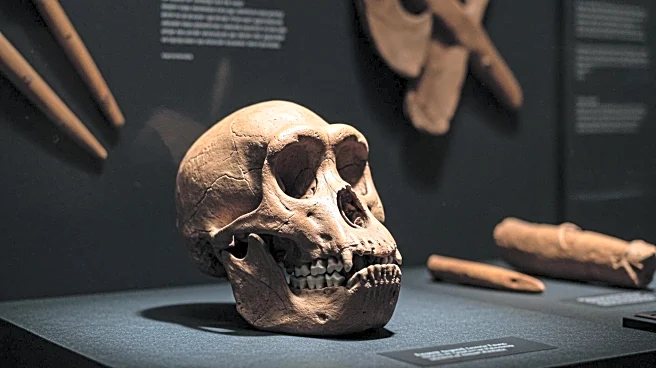What's Happening?
Researchers have uncovered 13 fossilized teeth in Ethiopia, believed to belong to a previously unknown species of Australopithecus. These teeth were found in the same sedimentary layers as the oldest known Homo fossils, dating back to 2.8 million years ago. This discovery challenges traditional theories of human evolution, suggesting that Australopithecus and early Homo species coexisted. The research, led by Arizona State University and published in Nature, emphasizes the need for more fossil evidence to understand the evolutionary relationship between these species. The team plans to analyze the tooth enamel to learn more about the diet and lifestyle of this new Australopithecus species.
Why It's Important?
This discovery has significant implications for the understanding of human evolution. It suggests a more complex evolutionary timeline where different hominin species coexisted, rather than a linear progression from Australopithecus to Homo. This could lead to a reevaluation of how early human ancestors adapted to their environments and interacted with each other. The findings may influence future research directions in paleoanthropology, potentially altering the narrative of human ancestry and evolution.
What's Next?
The research team plans to conduct further analysis on the tooth enamel to determine the diet of this new Australopithecus species. This could provide insights into how these hominins lived and interacted with their environment. Additionally, ongoing excavations at the site may uncover more fossils, offering further evidence to clarify the evolutionary relationship between Australopithecus and Homo species.


